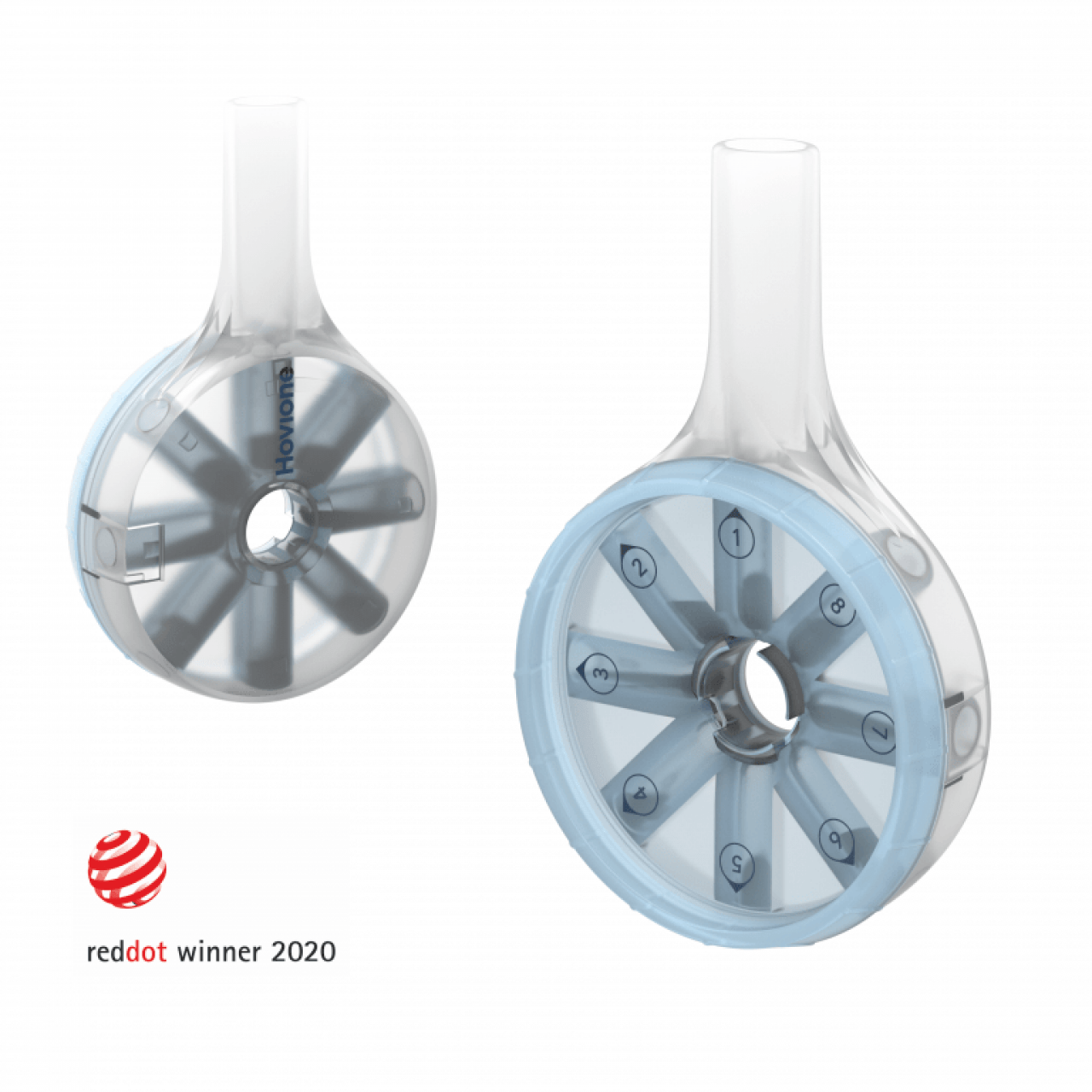
Hovione Technology recently announced its innovative 8Shot Dry Powder Inhaler (DPI) enabling high-dose drug delivery to the lungs has received the Red Dot 2020 Product Design Award in the Healthcare Daily Living AIDS category. The Red Dot Design Award is an internationally recognized quality seal awarded for innovative and high-quality product design.
“The Red Dot jury’s experience and expertise evaluating outstanding product design and technical innovation for more than 60 years is unparalleled. This distinction awarded to our 8Shot DPI is a great success for Hovione Technology”, said Peter Villax, Hovione Technology’s CEO.
8Shot is the world’s first 8-puff, disposable DPI enabling drug delivery of new pharmaceutical compounds requiring very high doses delivered to the lungs. It delivers therapeutic doses up to 400 mg formulated as drug alone or engineered particles in multiple, sequential inhalation maneuvers for maximum therapeutic benefit and patient safety.
“We are extremely proud and delighted to accept the Red Dot Product Design Award, together with our design and development partner WeADD,” said Dr João Ventura Fernandes, Hovione Technology’s Director of Technology Development and Licensing. “The 8Shot™ DPI is uniquely positioned to make available off-the-shelf to pharmaceutical companies a patented high payload DPI to deliver inhaled biologics, antibiotics, anti-virals, vaccines, pain or rescue treatments requiring high-dose drug delivery.”
Hovione Technology’s TwinMax and 8Shot dry powder inhalers are designed to enable safe and effective delivery of large doses to the lung. Featuring patented inhaler technology, TwinMax and 8Shot are compatible with drug doses up to 100 mg and 400 mg respectively, delivered conveniently to patients from multiple inhalations. Our Large Dose DPIs are suitable for inhaled delivery of biologics, antibiotics, anti-viral, vaccines, pain or rescue treatments.
Hovione Technology offers access to a complete portfolio of innovative, cost-effective dry powder inhalation devices – disposable, capsule-based, blister-based and large dose DPIs. With over 20 years of expertise developing innovative inhaler technology, Hovione Technology’s team has been behind the first market approved disposable dry powder inhaler for influenza treatment in Japan, the TwinCaps DPI. Millions of patients are being treated every year with Hovione Technology’s innovative inhaler technology. For more information, visit www.hovionetechnology.com
WeADD is a Portuguese Company specialized in innovation, development, product engineering and intelligent property in small and large appliances, machinery, functional packaging and consumer electronics in sectors such as health, sports, coffee and internet of things. For more information, visit www.weadd.com

